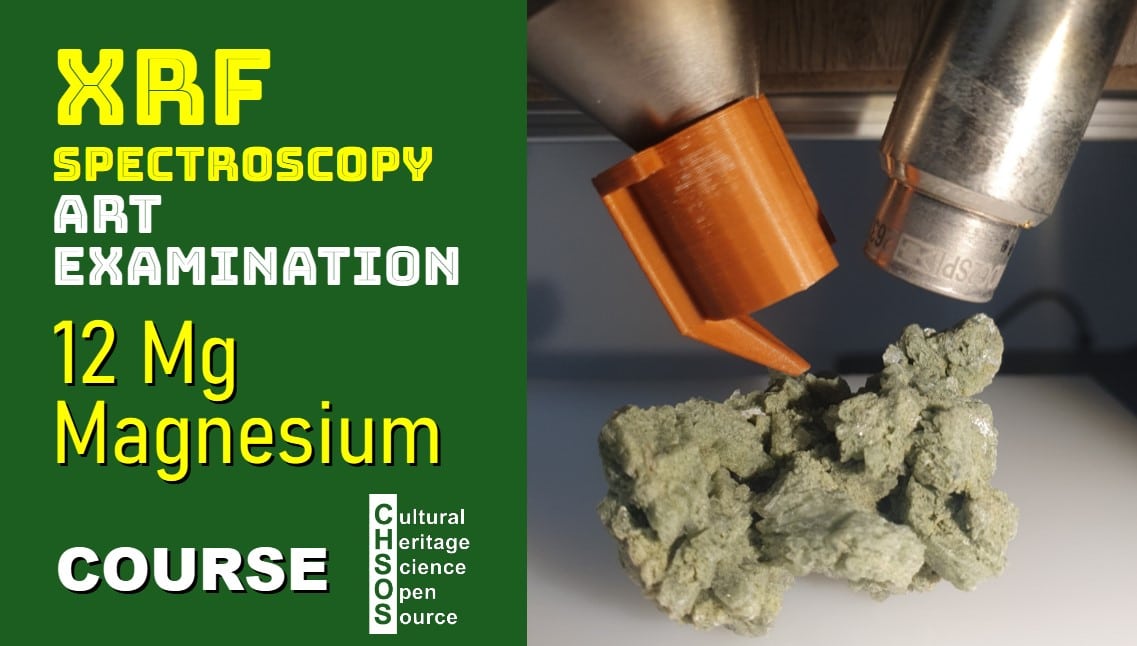
This lesson explores magnesium, element number 12, and its detectability using handheld X-ray fluorescence (XRF) spectroscopy systems. Magnesium follows sodium (element 11) in the periodic table, and we will address the key question: Can magnesium be effectively detected with handheld XRF systems?
Building on the knowledge from the previous lesson about sodium’s limitations in detection due to instrumental and physical constraints, we will examine magnesium’s slightly higher X-ray energy and assess its detectability in various forms, including metal, alloys, and minerals.
Objectives
- Understand the properties of magnesium relevant to XRF spectroscopy.
- Analyze the detectability of magnesium compared to sodium in handheld XRF systems.
- Explore the relationship between magnesium concentration and XRF peak visibility.
- Learn practical applications of magnesium detection in materials and pigments.
Materials
- Magnesium metal cube standard.
- Sample materials: pencil sharpener (magnesium alloy), magnesite (magnesium carbonate), celadonite, and green earth pigment.
- Online X-ray attenuation calculation tool (optional for demonstration).
Lesson Plan
- Recap of Previous Lesson
- Review sodium detection limitations using handheld XRF systems.
- Discuss the challenges posed by air attenuation of low-energy X-rays, particularly for sodium at 1 keV.
- Introduction to Magnesium Detection
- Highlight magnesium’s higher K-alpha line energy (1.25 keV) compared to sodium.
- Discuss the improved probability of magnesium X-rays reaching the detector.
- Theoretical Insights
- Use an online tool to calculate X-ray attenuation for magnesium.
- Compare the percentage of magnesium X-rays reaching the detector (10%) versus sodium (1%).
- Practical Tests and Results
- Test 1: Analyze a magnesium metal cube using the no-filter setup.
- Observe a distinct peak at 1.25 keV, confirming magnesium detection.
- Test 2: Analyze a pencil sharpener (magnesium alloy).
- Note similar results, with magnesium detected despite the presence of other alloying elements like aluminum.
- Test 3: Test magnesite (magnesium carbonate).
- Highlight reduced magnesium concentration and reduced peak intensity.
- Test 4: Test celadonite mineral.
- Discuss why magnesium detection fails due to low concentration in these samples.
- Test 5: Examine green earth pigment using PIGMENTS CHECKER.
- Note the absence of magnesium detection despite its presence in the pigment composition.
- Test 1: Analyze a magnesium metal cube using the no-filter setup.
- Discussion and Interpretation
- Summarize findings: Magnesium is detectable in high-concentration forms (e.g., pure metal or alloys).
- Explain the challenges of detecting magnesium in low-concentration samples, especially in pigments and minerals.







